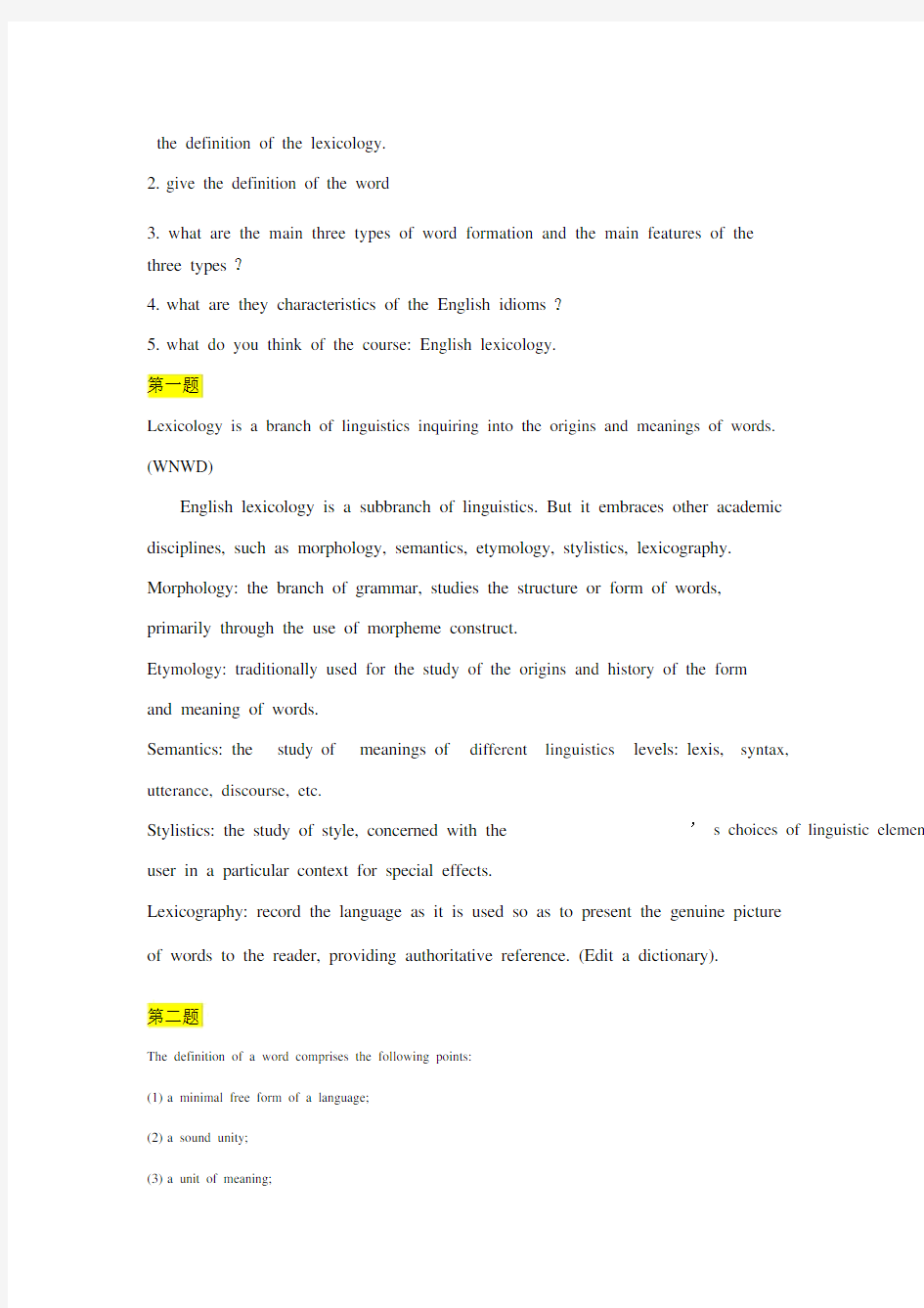
词汇学考试卷试题及标准标准答案.doc
- 格式:doc
- 大小:134.52 KB
- 文档页数:7


the definition of the lexicology.
2.give the definition of the word
3.what are the main three types of word formation and the main features of the
three types?
4.what are they characteristics of the English idioms?
5.what do you think of the course: English lexicology.
第一题
Lexicology is a branch of linguistics inquiring into the origins and meanings of words.
(WNWD)
English lexicology is a subbranch of linguistics. But it embraces other academic
disciplines, such as morphology, semantics, etymology, stylistics, lexicography.
Morphology: the branch of grammar, studies the structure or form of words,
primarily through the use of morpheme construct.
Etymology: traditionally used for the study of the origins and history of the form
and meaning of words.
Semantics: the study of meanings of different linguistics levels: lexis, syntax,
utterance, discourse, etc.
Stylistics: the study of style, concerned with the
’ s choices of linguistic elemen user in a particular context for special effects.
Lexicography: record the language as it is used so as to present the genuine picture
of words to the reader, providing authoritative reference. (Edit a dictionary).
第二题
The definition of a word comprises the following points:
(1)a minimal free form of a language;
(2)a sound unity;
(3)a unit of meaning;
(4) a form that can function alone in a sentence.
A word is a minimal free form of a language that has a given sound and meaning and syntactic
function.
第三题
The most productive word formations are affixations, compounding and conversion.
The rest of new words come from shortening including clipping and acronymy,
together with words born out of blending and other means. While applying the rules,
we should remember that there are always exceptions.
1. Affixation
Affixation is generally defined as the formation of words by adding word-forming or
derivational affixes to stems. This process is also known as derivation, the words
formed in this way are called derivations.
Prefixation. It is the formation of new words by adding prefixes to stems. The
majority of prefixes are characterized by their non-class-changing nature. Negative
prefixes: a-, dis-, in- (il-, ir-, im-), non-, un-.
Reversative prefixes: de-, dis-, un-.
Pejorative prefixes: mal-, mis-, pseudo-.
Prefixes of degree or size: arch-, extra-, hyper-, macro-, micro-,mini-, out-, over-, sub-, super-, sur-, ultra-, under-.
Prefixes of orientation and attitude: anti-, contra-, counter-, pro-.
Locative prefixes: extra-, fore-, inter-, intra-, tele-, trans-.
Prefixes of time and order: ex-, fore-, post-, pre-, re-.
Number prefixes: bi-, multi- (poly-), semi- (hemi-), tri-, uni- (mono-).
Miscellaneous prefixes: auto-, neo-, pan-, vice-.
Suffixation
It is the formation of new words by adding suffixes to stems. They mainly change the